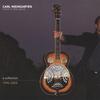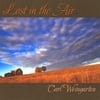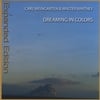 “Are you a professional photographer?”, the security guard asks me. This is the third member of the church cathedral uniform to ask me the same question. Professional, I assume means do I make my living with photography? I answer “No”. “What are you going to use it for?” he asks. “Personal” I say. “We have protocols.” he says politely, and walks away. The cathedral has a well regulated militia, and I have set up my camera within their jurisdiction. A week earlier, I had asked the receptionist on duty if photography was allowed inside the cathedral. “Oh yes, that’s no problem.” She had answered. So as with scripture, there are many answers to the same question.
“Are you a professional photographer?”, the security guard asks me. This is the third member of the church cathedral uniform to ask me the same question. Professional, I assume means do I make my living with photography? I answer “No”. “What are you going to use it for?” he asks. “Personal” I say. “We have protocols.” he says politely, and walks away. The cathedral has a well regulated militia, and I have set up my camera within their jurisdiction. A week earlier, I had asked the receptionist on duty if photography was allowed inside the cathedral. “Oh yes, that’s no problem.” She had answered. So as with scripture, there are many answers to the same question.The cathedral I am standing in is called Christ The Light. It was built in 2009 near where I work in Oakland. The giant steel and glass turret structure is 12 stories tall, sleek and modern. I had watched and heard its construction, rising from parking lot to the massive concrete complex. One afternoon last summer, I stepped inside to escape the heat, and was taken with the immense, beautiful and quiet space. After several visits, I experienced something else, an atmosphere of common courtesy. No cell phone yellers or boasting public chatter, piped in radio, hissing headphones, laptop tapping, or moonfaced heads bobbing in front of tiny glowing screens. Just rows of long, comfortable benches, with patrons standing or sitting quietly, some speaking softly to those next to them. Alone together in lunch hour heaven.
Common courtesy seems rare these days. Yet people will abide in the house of the almighty. Outside the cathedral, where God is apparently not looking, values get reinterpreted. As when for example, on my way home recently, a distracted BMW driver, and god fearing cell phone user, praised me with shouts and gestures after I changed lanes in ahead of him.
With my tripod secure, I faced the pinhole camera down the center aisle. There is no lens on a pinhole camera, just a tiny opening on the front, exactly 0.3mm wide. Light shines through the hole, and assembles an image, naturally, against the far side of the camera. The image is then captured on film. This miracle of nature is fundamentally how our eyes work.
Sunlight illuminates the cathedral hall. Streaming through the tinted glass above and between wood shades lining the tower, the light sparkles without glare. I take a meter reading, which indicates that my exposure should average 40 seconds. The light coming through the pinhole is so dim that the film must be exposed from between a few seconds to a few minutes. During the exposure, the camera and the subject must remain perfectly still. Objects or people moving within the image become either a blur or completely invisible. I open the shutter and count off, one . . . two . . . three. . The camera captures the church interior in a dynamic wide angle view. The patrolling securing guards disappear like ninja.
I move the camera to get several views inside the cathedral, including the two figures of Jesus. One as a giant projection of life on the far wall, and the other as a hovering statue of the dying martyr. I think respectful thoughts and count off, one . . two . . three. As the seconds pass, I reflect on the moment, and flash on the idea that something unseen and magical will appear in the photograph. With the film exposed, I pack up my gear and leave unnoticed.







No comments:
Post a Comment